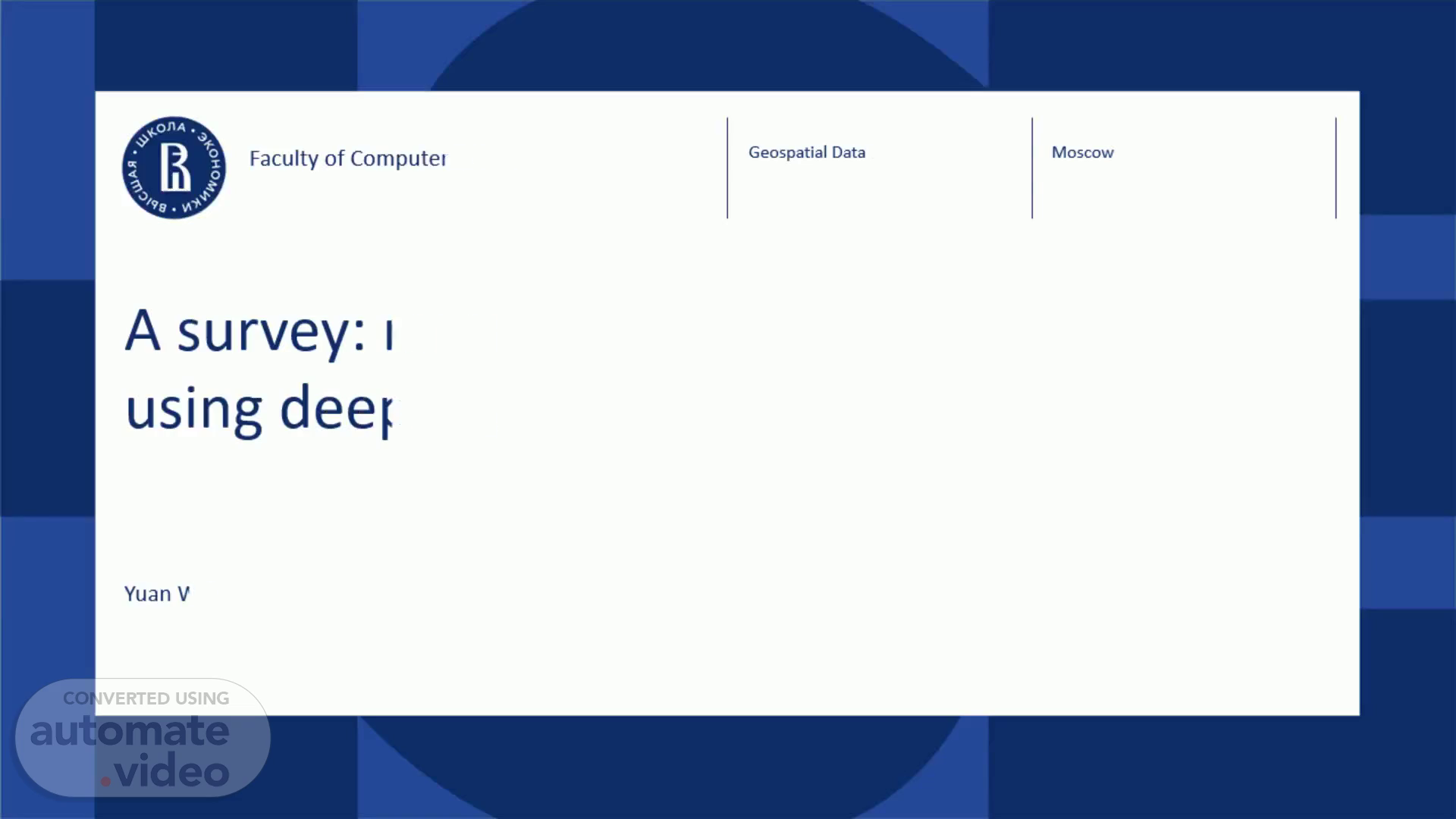
A survey: mapping forest fire risks using deep learning
Scene 1 (0s)
A survey: mapping forest fire risks using deep learning.
Scene 2 (10s)
Introduction. Wildfires: Reshaping landscape mosaics and influencing biogeochemical cycles, including the carbon cycle. Forest Fires: The primary mechanism that shapes the type and arrangement of plants in any particular area. Carbon emissions, consume natural resources, harmful smoke, society.
Scene 3 (25s)
Introduction. Mapping: Global, local: geographic type, vegetation type,etc Long-term, short-term Model: knowledge-based Machine learning based: Conventional Neural network based.
Scene 4 (37s)
Related Works. Contributing Factors: They include but are not limited to weather and climate, vegetation distribution, vegetation fuel type, topography, slope, wind direction, human characteristics, etc., influencing forest fires' size and intensity.
Scene 5 (53s)
Related Works. Risk Model: The risk model is derived from hazard and susceptibility. Risk = Social vulnerability × Physical vulnerability × Hazard.
Scene 6 (1m 5s)
Related Works. Methodology: First: acquire the necessary data at the required spatial and temporal scales. Second: evaluate the associated hazard level, vulnerability, and emergency response capacity. Third: import the relevant data, assign weights, and perform spatial analysis using GIS. Fourth: generate the fire risk model for fire risk mapping.
Scene 7 (1m 27s)
Results. Method Compard with Author(s) Data type Conclusion ANN with SVM Sakr et al., 201 1 C umulative precipitation , relative humidity Low error of this method No need for many parameters ANN LR de Bem et al.,2019 Landsat ANN is not always better than LR with different land types ANN with frequency-probabilistic rating procedure Dimuccio et al.,2011 Historical burned areas Less ambiguity of the input contributing factors Less interpretation.
Scene 8 (1m 48s)
Results. Method Compard with Author(s) Data type Conclusion CNN SVM,RF,MLP,KLR Zhang et al., 2019 Historical fire places CNN outperoms traditional ML methods High complexity,low interpretability Architectural problems CNN architecture based on the encoder-decoder architecture Santopaolo et al., 2021 Public raster data High spatial and temporal resolution in the network analysis Can't get rid of influences of input data.
Scene 9 (2m 8s)
Results. Method Compard with Author(s) Data type Conclusion LSTM DT,LR,SVM,NN Omar et al., 2021 UCI machine repository LSTM outperforms traditional ML methods LSTM BPNN,RNN Liang et al., 2019 Meteorological factors LSTM outperforms BPNN and RNN More factors,better accuracy.
Scene 10 (2m 23s)
Results. Method Compard with Author(s) Data type Conclusion DNN wtih MLP Naderpour et al., 2021 Meteorological data Less overfitting Need comparasions to estimate performance DNN with autocoder SVM,ANN,RF Lai et al., 2022 Canada National Fire Database Solve the imbalances in historical data More data,more accuracy.
Scene 11 (2m 40s)
Results. Method Compard with Author(s) Data type Conclusion Hybrid method named DFP-MnBpAnn PSO-NF, RF, SVM, LSSVM, and BpAnn Tien Bui et al., 2018 Multitypes from the study area High superiority and prediction accuracy in the study region Address the issue of premature convergence caused by gradient descent in the ANN technique. Hybrid method named Multi-AM-LSTM RNN and LSTM Li et al., 2021 Montesinho database Solve the extraction of contributing factors Multi-AM-LSTM outperfroms than RNN and LSTM More iterations, more accurate.
Scene 12 (3m 4s)
Results. Method Compard with Author(s) Data type Conclusion CNN with different dimensions MLP with differnent dimensions Tien Bui et al., 2018 Multitypes from the study area CNN with more dimensions outperforms it with a single demsion Higher accuracy and interpretability CNN-3D opens up possibilities for further time-scale studies Hybrid method named CNN2D-LSTM RNN and LSTM Li et al., 2021 Landsat and historical data CNN2D-LSTM outperforms CNN and LSTM.
Scene 13 (3m 25s)
Difficulties and Ideas. First,We cannot guarantee the accuracy of the obtained geographical data, especially for small areas, in the analysis of forest fire risk. These objective factors most hinder the accuracy of predictions. Therefore, we need additional studies that can validate the data. Second, due to geographical diversity, the geographical characteristics of different regions and the contributing factors that must be studied for each area are always distinct. It is challenging to choose parameters uniformly for global fires. The selection of parameters must be adjusted based on the interaction of fires in different regions, which requires the subjective judgment of experts to some extent. At the same time, introducing different parameters brings uncertainty to the fire risk and cannot be avoided. A DNN method can partially resolve this issue, but it needs to be optimized. Therefore, we need studies that can reduce the ambiguity associated with the knowledge of the study area. Third, the approach based on deep learning is highly demanding on model parameter pairs. Both the grid structure and the setting of model parameters depend heavily on the experience of experts and are somewhat random. Due to their high sensitivity, the selection of different parameters may produce very different results. Moreover, the vanishing and explosion of gradient drops are a problem. It may be solved with some hybrid methods..
Scene 14 (4m 20s)
Conclusion. The accuracy of the results varies, however, due to the reliance on data. In the future, this issue may be solvable through a combination of techniques for data mining. In addition, methods of deep learning will be less interpretable. Nevertheless, this issue can be partially resolved if only the geographic spatial and temporal features are extracted from, for example, meteorological data. With the emergence of an increasing number of hybrid methods, the overfitting issue of deep learning can also be partially resolved. Deep learning methods offer numerous additional opportunities for mapping forest fires and urgently need to be explored..
Scene 15 (4m 48s)
Thanks!.